Check your blood sugar for fasting sugar (less than 100 mg/dL), Normal (70 mg/dL to 100 mg/dL) Random & Post prandial ( less than 140mg 2 hrs after food) to find out if you have diabetes.
Download 30 Days Blood Sugar Chart Tracker Blood Sugar Chart is an essential calculator, especially for those newly diagnosed with diabetes. It acts as a helpful guide for self-education and supports more effective diabetes management. (
1✔)
Blood Sugar Chart outlines blood sugar values in mg/dl based on different types of tests, including fasting sugar, post-meal (postprandial) levels, and
Glucose tolerance test (GTT)It provides reference ranges for normal individuals, those with early-stage diabetes, and those with established diabetes.
Controlling
blood sugar levels is crucial for managing diabetes, and good self-management can significantly improve both short- and long-term health outcomes and prevent complications of
diabetes (
2✔).
By regularly using this chart, you can monitor your blood sugar levels, better understand
why the sugar fluctuates, and learn how to manage your diabetes more effectively to stay healthy.
(Please Note: This interpretation does not apply if you are pregnant)
What Is Normal Blood Sugar Level?
A person without diabetes would typically exhibit "normal" blood sugar levels. A normal blood sugar level for a non-diabetic adult who has fasted for at least 8 hours is less than 100 mg/dL (6.1 mmol/L). This reference value may vary depending on age, health status, and other factors, and people with diabetes may have different target blood glucose ranges recommended by their healthcare provider.
Regular monitoring of blood glucose levels and consultation with a healthcare provider is essential to maintain proper blood sugar control and prevent complications associated with high or low blood glucose levels.
Fasting Blood Sugar Level:
Fasting glucose is the blood sugar level measured after an overnight fast. The reference range for a normal fasting glucose measurement is between 70 mg/dL (3.9 mmol/L) and 100 mg/dL (5.6 mmol/L).
Fasting blood sugar level, also known as fasting plasma glucose (FPG), is a test that measures the amount of glucose in your blood after an overnight fast of at least 8 hours. This test is often used to diagnose prediabetes and diabetes.
There are several factors that can affect fasting blood sugar levels, including diet, exercise, stress, medication, physical activity and other health conditions. For this reason, it is important to consult with a healthcare provider to interpret your fasting blood sugar test results and determine the appropriate course of action(
3✔).
Prediabetes is diagnosed when fasting blood sugar levels are between 100-125 mg/dL (5.6-6.9 mmol/L) while diabetes is diagnosed when fasting blood sugar levels are equal to or greater than 126 mg/dL (7.0 mmol/L) on two separate occasions.
Random Blood Sugar Level:
This is the level of glucose measured randomly in your bloodstream at any time of day without the need to fast. Your healthcare professional may use the Rapid Plasma Glucose test (RPG) to diagnose diabetes when your symptoms are present and they do not want to wait for a fasting plasma glucose test. You do not need to fast for the RPG test. This random blood sugar test indicates that you have diabetes if your sugar level is 200 mg/dL or higher. The RPG does not use blood glucose levels alone to diagnose diabetes or monitor your treatment – it is used in combination with other diagnostic tests like HbA1C value.
A blood glucose meter often called a glucometer measures blood glucose. It is a small, handheld device you can use at home, anytime, and anywhere. This testing machine which can be bought over the counter. These meters provide a way for you to monitor your own blood sugar levels and carbohydrate consumption(
4✔,
5✔,
6✔).
Blood Sugar Levels by Age
Maintaining healthy blood sugar levels across different age groups is essential for preventing diabetes and promoting overall well-being—learn about age-specific targets for optimal blood glucose control (
18✔).
- Children (under 6 years)
- Normal Range (Before Meals): 100 to 180 mg/dL (5.5 to 10.0 mmol/L)
- Normal Range (After Meals): Less than 180 mg/dL (10 mmol/L)
- Notes: Young children may experience fluctuating blood sugar levels due to growth and activity. Regular monitoring is crucial, especially for those with diabetes.
- Children (6-12 years)
- Normal Range (Before Meals): 90 to 180 mg/dL (5.0 to 10.0 mmol/L)
- Normal Range (After Meals): Less than 180 mg/dL (10 mmol/L)
- Notes: This age group requires consistent monitoring, as activity levels and diet can significantly impact blood sugar.
- Adolescents (13-19 years)
- Normal Range (Before Meals): 90 to 130 mg/dL (5.0 to 7.2 mmol/L)
- Normal Range (After Meals): Less than 180 mg/dL (10 mmol/L)
- Notes: Hormonal changes during puberty can affect blood sugar levels. Education on managing diabetes is important.
- Young Adults (20-39 years)
- Normal Range (Before Meals): 90 to 130 mg/dL (5.0 to 7.2 mmol/L)
- Normal Range (After Meals): Less than 180 mg/dL (10 mmol/L)
- Notes: This group may face lifestyle changes that impact blood sugar. Regular check-ups and a balanced diet are vital.
- Middle-Aged Adults (40-59 years)
- Normal Range (Before Meals): 90 to 130 mg/dL (5.0 to 7.2 mmol/L)
- Normal Range (After Meals): Less than 180 mg/dL (10 mmol/L)
- Notes: Increased risk of insulin resistance and type 2 diabetes. Regular monitoring and lifestyle modifications are essential.
- Seniors (60 years and older)
- Normal Range (Before Meals): 90 to 130 mg/dL (5.0 to 7.2 mmol/L)
- Normal Range (After Meals): Less than 180 mg/dL (10 mmol/L)
- Notes: Seniors may experience variations due to medications and health conditions. Continuous glucose monitoring can be beneficial.
Important Facts About Blood Sugar
- Glucose is a simple sugar and is one of the primary molecules which serve as energy sources for both plants and animals(7✔).
- Insulin, a hormone produced by the pancreas, helps maintain normal blood sugar levels(8✔).
- Uncontrolled or high blood sugar levels can lead to health complications such as blindness, heart disease and kidney disease(9✔).
- Increase or decrease in the glucose level in the blood can lead to a condition called "diabetic coma"(10✔).
Useful Downloads for Diabetes
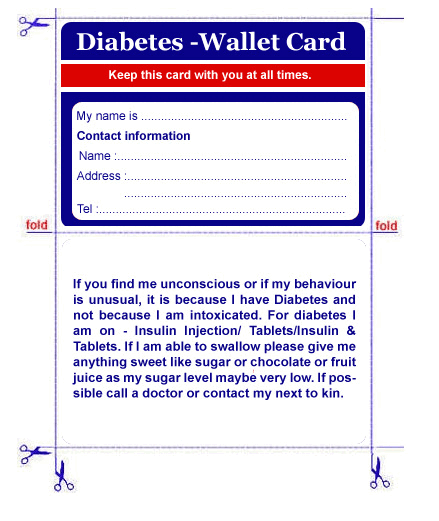
Download 30 Days Blood Sugar Chart Tracker
Frequently Asked Questions About Blood Sugar
1. Which doctor is well qualified to treat my high Blood Sugar
A physician with an interest in diabetes treatment can be consulted for high blood Sugar. You should visit your doctor at regular intervals for check-ups and keep a blood sugar chart over a period of time(11✔).
It is best to be under the care of a diabetologist or an endocrinologist if they are available. In many cities special diabetes centers have opened up to take care of diabetic patients.
Opt for premium sign up for wellness :
https://www.medindia.net/regis/diabetes-premium-member.asp
2. How do I set about altering my lifestyle to counter high blood sugar
- Consult a doctor, a dietician and also a counselor and find out how to go about your tasks effectively.
- If you are overweight, losing weight can help in controlling your of blood sugar. Regular exercise and a diet plan can help lose weight.
- Take the help of family and friends who can be supportive to help in achieving the target weight loss(18✔).
To learn more about Type 2 Diabetes -
https://www.medindia.net/health/conditions/type-2-diabetes.htm
3. Which organs can get damaged by high Blood Sugar?
High Blood Sugar or Diabetes can damage your eyes, kidneys and feet and these should be regularly checked. If you are overweight get a consultation for your heart too(13✔).
4. What is diabetic Retinopathy?
It is a progressive eye disease that results in damage to the retina(14✔).
Find out here:
https://www.medindia.net/health/conditions/general-info-about-diabetic-retinopathy.htm
5. What is diabetic nephropathy?
It is another name for kidney disease that results due to diabetes(15✔).
Find out here:
https://www.medindia.net/health/conditions/diabetic-kidney-disease.htm
6. What is diabetic neuropathy?
It is a very common complication of diabetes, causing damage of the nerves that may result in pain or loss of sensation. Loss of sensation to the feet can result in injury and ulcers in the legs or feet that may not easily heal(16✔).
Find out here:
https://www.medindia.net/health/conditions/diabetic-neuropathy.htm#what-is-diabetic-neuropathy
7. What are the measures required to take care of feet in diabetes?
In one sentence, look after your feet as you would look after your face. Like your face examine your feet daily and look for any bruises or cuts. The following measures can be taken to take care of diabetic feet(17✔).
- Keep sugar levels under control
- Ensure that the HbA1C is within a defined range
- Learn to examine your feet including the soles of your feet
- Choose the correct foot wear and avoid tight fits
- Always keep feet clean
- Keep the feet covered when traveling outdoors
- Make lifestyle adjustments to avoid injuries
- Walk and/or exercise regularly to help the circulation
- During medical check-ups get the leg and feet examined at least once a year
- Make an appointment with a podiatrist if available when require
Recommended Readings on Blood Sugar
Low GI food helps in managing diabetes and body weight. Check out our GI calculator to chalk out the most appropriate diet plan.
A continuous glucose monitor is an automated device to measure blood glucose levels seamlessly throughout the day and night to offer better diabetes management.
Gestational diabetes calculator checks post prandial and fasting blood sugar level to tell if you have pregnancy diabetes. Know about gestational diabetes diet and more using this calculator.
Almost one-third of the people are unaware of the risk factors of diabetes. Find out if you run the risk of diabetes by using Diabetes Risk Assessment calculator.
Neonatal hypoglycemia is defined as a blood sugar level of <30-45 mg/dL in a newborn. The hypoglycemia in newborns could result in developmental delay.
Gestational diabetes occurs in women during pregnancy when blood glucose levels increase in their body. It is diagnosed during the 24th week of pregnancy. Take this quiz to know more about its complications and how will your baby get affected if its ...
What is a blood sugar test? Blood sugar tests are used for diagnosis and management of diabetes. Common tests are HbA1C, fasting blood sugar, oral glucose tolerance and random blood sugar.
HbA1c calculator calculates average plasma and whole blood glucose levels. A1c test tells your average blood sugar level in the past 3 months and helps check whether your diabetes is in control.
Diabetes has replaced every other condition to become the fastest growing lifestyle disease, globally. This disease also impacts children. Some people are more inclined to develop diabetes than others. Do you belong to the high- risk group? Spend 5 ...
A comprehensive article on diabetes - both Type 1 and Type 2 diabetes, including : causes, signs, symptoms, diagnosis, treatment, facts and a glossary on diabetes.


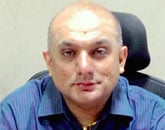



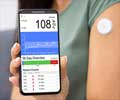
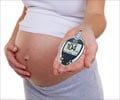
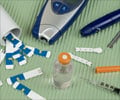



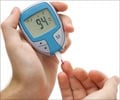




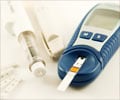

MY FASTING BLOOD SUGAR LVL IS 106 AND PP IS 120 AND h1BAC IS 5.5. ARE THESE VALUES OK.